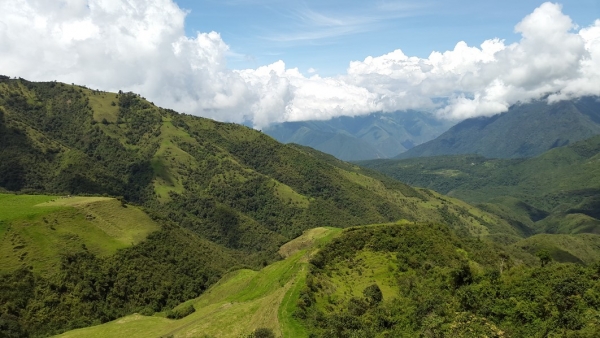Landscape approaches: better tools to boost conservation of Andean forests

Landscapes are a keystone in the study and synthesis of social and environmental processes. They are part of a wide range of approaches that explicitly integrate spatial heterogeneity, path dependency and fluxes and feedbacks between people and the resources and ecosystems they use. Landscape approaches are gaining traction in different policy arenas, from the improvement of governance of natural resources to the design more effective responses to climate change. Explicit examples of the application of landscape approaches in the Andes are still scarce, but as multiple (and often conflicting) land management goals are converging into the same areas, it is relevant to think about the potential held by landscapes to address long standing challenges related to sustainability of land systems. More specifically, what are the features that landscape approaches have that can contribute to the sustainable management and conservation of Andean forests?
From a landscape ecology perspective, the focus on the links between landscape structure and ecosystem function offer substantial opportunities and persisting challenges. The distribution and spatial configuration of forest remnants are important, especially in areas where water flow regulation and erosion control are key to secure the provision of water for human use or for the generation of hydroelectricity. The links between patterns and processes extend to biomass productivity, the movement of nutrients and contaminants, and in general the interactions between water, vegetation and soils. However, the paucity of basic research in Andean landscapes hinders the effective use of landscape ecological principles to support decision making. This extends to other important attributes of heterogeneous landscapes related to the links between land use, species, and higher levels of organization of biodiversity.
A second important feature of landscape approaches is the attention to institutional arrangements at multiple scales. This is especially important in Andean forest landscapes where decisions about forest and other natural resources use are often the result of the interplay between actors operating at local to national and global scales. This is observed in areas where land tenure systems are still being defined and where intensive agricultural systems overlap with a renewed push towards extractive activities such as mining, non-traditional economic activities (e.g. ecotourism) and other land management goals. This multi-scaled attribute of governance is not exclusive of Andean forest landscapes, but in this region they achieve high relevance in a context where high biodiversity conservation value, provision of critical ecosystem services and other productive goals coexist in relatively confined areas.
Also, a key feature related to the previous point is the potential of landscapes approaches to help in the characterization of benefits and trade-offs attached to different land management goals. For example, upstream and downstream effects are exacerbated in the Andes due to complex topography and steep elevation gradients. Fine scale variability is generated by historical development trajectories and different patterns of access to resources which sometimes translate in neighboring communities having drastically different land use regimes and generating positive and negative externalities on each other.
Landscape approaches are certainly not new or fundamentally different from many preceding conceptual and methodological frameworks used to address complex nature-society links. However, a real opportunity may be created to move forward in the development of more powerful research and intervention tools. Some potentially productive ways forward include:
- Defining and monitoring a set of study landscapes distributed across the Andes can help to capture a variety of socioeconomic contexts, ecosystems, and their interactions. This will require collaboration among actors in the academy, NGOs and other to identify and implement a set of minimum conceptual and methodological standards.
- Characterizing and monitoring land use patterns provide a common source of information to understand other complex processes. This is not a trivial task in mountainous areas with complex topography, constant cloud cover and complex land use and land cover mosaics such as the tropical Andes.
- The most productive approaches need to integrate multiple scales, from households to communities, landscapes and links to external actors.

Facebook comments